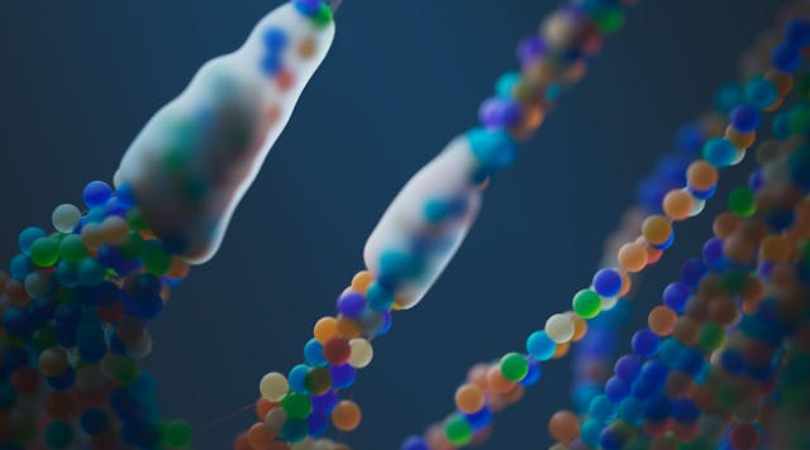Scientists have successfully restored the lost uricase enzyme, a key breakthrough in combating fructose-induced fat formation. This discovery offers new hope for preventing obesity and metabolic disorders by targeting how the body processes sugar and stores fat.
Limited Quantities Available! Order Today and Enjoy Free Shipping on Orders Over $100!
Stop Chasing Symptoms: 4 Steps to Rebuild Your Health from the Inside Out

We’ve been taught to chase symptoms.
- Inflammation? Take antioxidants.
- Low energy? Drink caffeine.
- Weight gain? Try cardio.
- Poor sleep, foggy brain, low libido? Eat cleaner, exercise more, reduce stress.
It’s not that these are bad ideas. They just aren’t enough. Because most of them treat the effects, not the cause.
If your cells aren’t healthy, nothing else works.
But if you fix your cells, everything else starts to fall into place.
This article breaks down the four highest-leverage interventions for restoring true health—not by patching symptoms, but by rebuilding your body from the cellular level up. These steps don’t require much time—but they do require precision.
1. Remove the Root Cause – Fructose

At the core of poor cellular function is a single, underappreciated molecule: fructose.
Fructose isn’t just another sugar. It’s a biochemical switch—one that tells your cells to:
- Store fat
- Increase uric acid (which drives blood pressure, mitochondrial damage, and insulin resistance)
- Trigger inflammation
- Conserve energy and reduce mitochondrial output
This was once a survival adaptation. In nature, fructose helped animals fatten up before winter. But today, we’re activating this fat-storage program year-round—not just from sugar, but also from high-glycemic carbs, salty foods, alcohol, and even stress.
The good news? You can turn it off.
- Cut sugar and ultra-processed carbs
- Inhibit fructokinase, the enzyme that triggers fructose metabolism (e.g., with Luteolin, found in Sugarshield)
- Add tart cherry extract, which helps buffer the oxidative stress caused by fructose breakdown
When you reduce fructose metabolism, inflammation drops, hormones rebalance, and your mitochondria come back online. This is the most important domino. Without it, everything downstream fights uphill.
“Fructose appears to mediate the metabolic syndrome in part by raising uric acid, and there are now extensive experimental and clinical data supporting uric acid in the pathogenesis of metabolic syndrome.”
— Johnson RJ et al., “Hypothesis: Could Excessive Fructose Intake and Uric Acid Cause Type 2 Diabetes?” Endocrine Reviews 30 (1): 96‑116, 2009
2. Use Fuel Wisely – Train Metabolic Flexibility
Once you stop flooding your cells with fructose, the next step is to restore how they process energy.
Most people aren’t lacking fuel—they’re just not accessing it. Poor metabolic flexibility means being stuck in glucose-burning mode, unable to tap into fat stores efficiently.
You can fix this by retraining the system:
- Lower your carb intake—especially when inactive
- Use intermittent fasting or time-restricted eating to let insulin levels drop
- Do Zone 2 cardio—steady, low-intensity movement (like brisk walking or cycling) that targets your mitochondria and improves fat-burning
“A volume‑matched comparison study between MICT [moderate‑intensity continuous training — classic Zone 2 range] and SIT [sprint‑interval/high‑intensity work] showed that MICT conferred greater mitochondrial adaptation and lower blood lactate at the same relative work rate, whereas SIT demonstrated greater VO₂max and peak power increases.”
— Langan & Grosicki, Exercise Is Medicine… and the Dose Matters, Frontiers in Physiology, 2021
This isn't about calories. It's about giving your cells the capacity to burn cleaner, longer-lasting fuel—and flip between sources as needed.
3. Provide the Right Stimulus – Signal for Strength

Cells need a reason to adapt. Without demand, there’s no change.
Muscle is one of the most metabolically protective tissues in the body. It guards against insulin resistance, frailty, and metabolic decline. But it doesn’t grow from casual movement—it grows from failure.
You don’t need long workouts. You need the right signal:
- Train with resistance to failure
- Use variable resistance (like bands or the X3 Bar) to load effectively through your full range of motion
- Just 7–10 minutes a day of maximal effort is enough if it includes real intensity
“Low muscle strength was more strongly and significantly associated with all‑cause mortality than low muscle mass.”
— Zhang Y et al., “Associations of Muscle Mass and Strength with All‑Cause Mortality among US Older Adults,” Frontiers in Physiology 9:1037, 2018
The goal isn’t more time—it’s more signal. And once the body gets the signal, it needs the building blocks to respond…
4. Provide the Building Blocks – Essential Amino Acids
Muscle isn’t built in the gym—it’s built from protein.
And not just any protein—what your body really needs are Essential Amino Acids (EAAs).
These nine amino acids can’t be made internally. If they’re missing, you can’t effectively repair or build tissue—even with great workouts or clean eating.
Supplementing with EAAs ensures your body has everything it needs to:
- Trigger muscle protein synthesis
- Rebuild tissue
- Maintain lean mass during fasting or calorie restriction
- Support hormone, enzyme, and neurotransmitter function
“Essential amino acids are primarily responsible for the amino acid‑induced stimulation of muscle protein anabolism in the elderly.”
— Volpi E et al., “Essential Amino Acids Are Primarily Responsible for the Amino Acid Stimulation of Muscle Protein Anabolism in Healthy Elderly Adults,” American Journal of Clinical Nutrition 78 (2): 250‑258, 2003
Without these building blocks, even the best training or recovery protocol falls short.
Conclusion: Fix the Foundation, Not the Facade
If you’ve been doing “everything right” and still feel stuck, this might be why: you’re working downstream.
True health starts at the cellular level.
- Remove the metabolic block (fructose)
- Rebuild mitochondrial function
- Stimulate the system to grow
- Feed it what it needs to respond
You don’t need hacks. You need leverage.
And it all starts with modulating fructose metabolism—the root disruptor of energy use, inflammation, and cellular balance.
That’s why we created Sugarshield—a daily tool to help block fructose at its source, support clean energy production, and lay the foundation for metabolic health.
Not as a shortcut. But as a first intelligent step toward building a stronger, more resilient body.
Disclaimer: The information in this blog reflects personal opinions, experiences, and emerging research. It is not intended as medical or professional advice and should not replace consultation with qualified professionals. The accuracy of this content is not guaranteed. Always seek guidance from a licensed expert before making any health-related decisions.


Chris | 🔬 Founder of LIV3 Health
⚡ A keen researcher dedicated to uncovering the root causes of metabolic dysfunction, the key driver of chronic conditions behind 70% of global deaths. His findings led to science-backed, natural solutions designed to inhibit fructose metabolism.
📢 Follow me on Reddit for insights on metabolic health and the future of wellness! -






